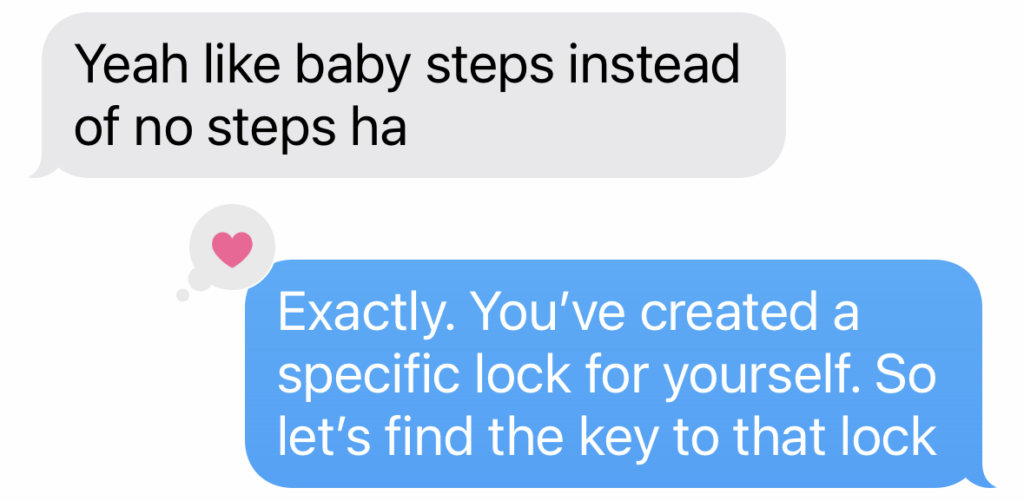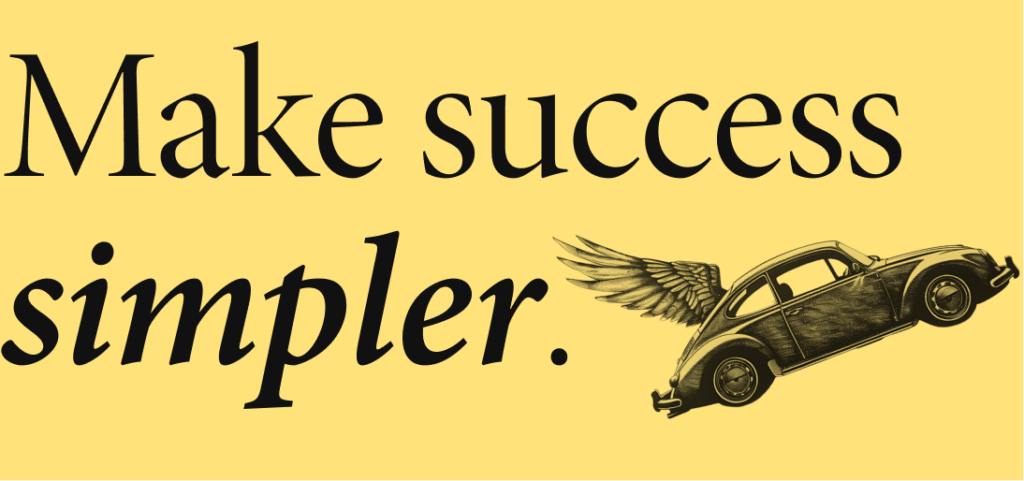Welcome to One Thing Better. Each week, the editor in chief of Entrepreneur magazine (that’s me) shares one way to be more successful and satisfied — and build a career or company you love.
Today’s one thing: Pushing through fear.
That one thing, better: Identifying your fear.
You’re afraid to do something.
You’ve already heard the advice on this. Take the leap! Just do it! But they don’t resonate — and here’s why.
Take the leap is dismissive of your fears. It’s telling you to just magically stop. It’s like: Oh, quit being afraid? I never thought of that!
No. Doesn’t work like that.
Today, I’ll share a different strategy. I want you to acknowledge your fear. Embrace it! Search inside it. Because somewhere, buried in that dark place, is the key to your problem.
To start, I’ll show you how this helped a friend who’s been afraid of starting a new project.
What’s the real problem?
I have a friend I’ll call Andrea. She’s talented and accomplished, and has overseen production teams for the world’s largest media brands. I bet you’ve seen something she’s made. But you’ve never seen her face or name, because she’s always behind the scenes.
Now she’s wondering… maybe she should put herself out there?
So she texted me:

I love this question. She knows she’s stuck. She knows she’s afraid. And she knows she needs something to dislodge herself. She’s just not sure what.
In turn, I had a question for her — and it revealed a lot.
Here was the next part of our conversation:

Hey, look — I can’t always promise good ideas, but I’m hopefully reliable for not-bad ones. 🙂
But in truth, Andrea already knew the problem and solution herself. As I’ll explain below, she gave it away in the very first words she told me.
Because here’s the thing: When we’re afraid, we’re not always sure what we’re afraid of. And if we don’t know that, we can’t find the right solutions. But even when we’re lost, we know a lot more than we think.
Where’s the pain?
Let’s step away from fear for a moment, and instead, let’s talk about pain.
Have you ever felt pain in one part of your body, but the problem was actually somewhere else? Why is that? I got curious, so I looked it up. Pretty interesting answer:
“Sometimes pain felt in one area of the body does not accurately represent where the problem is because the pain is referred there from another area. Pain can be referred because signals from several areas of the body often travel through the same nerve pathways in the spinal cord and brain. For example, pain from a heart attack may be felt in the neck, jaws, arms, or abdomen. Pain from a gallbladder attack may be felt in the back of the shoulder.”
If you have a gallbladder problem, no amount of shoulder massage will cure it. This is why you see a doctor. They can backtrack from the pain, find the root cause, and then treat it.
We can think of fear similarly. Fear radiates outward — starting in one place, but manifesting in another. So if you’re stuck trying to overcome something scary, it’s worth trying to identify the root cause.
A moment ago, I said that Andrea “already knew the problem and solution herself.” Here’s what I mean by that:
Andrea told me that she’s afraid of starting a podcast, and then told me she’s been in “sponge phase” — learning all there is to learn about podcasting. But somehow, she says, this research hasn’t cured her fear.
Know why? Because her fear isn’t about knowledge! If she was afraid of looking uninformed about podcasting, then this “sponge phase” would be exactly the solution she needed. But because it didn’t solve the problem, she needed to better define the root cause of her fear.
That’s why I asked Andrea the question: “What’s the worst that can happen?”
By playing a fear out to the extreme, we can see what this fear is really about — and therefore how to resolve it.
The lock and the key
Here’s one more part of my text with Andrea. I’d just suggested that she make a podcast episode and share it with 10 honest, non-judgmental friends. She liked that idea.
Then she wrote:

That’s the visual I want you to hold onto: The lock and the key.
Your fear isn’t general. It’s specific. It has nuances. It is the product of your own experiences, expectations, and perceived shortcomings. It is a lock of your own making.
This is why advice like “take the leap!” doesn’t help. It’s asking you to throw this very specific, personal lock away. To not even engage with it. To ignore it.
But you cannot. You need to unlock that lock. Which means you need the key — and the key has to be as personal as the lock itself.
Andrea is a behind-the-scenes expert. She doesn’t usually put herself on mic. That means she has all sorts of questions about herself: Does she have things to say? Is she boring? Will anyone listen? These are her locks.
To move forward, she needs a key that’s crafted specifically for her lock.
That’s why I suggested making a podcast episode and sharing it with a few friends. This lowers the stakes, so she can give herself permission to just make a thing — which is really what she needs to do. Once she starts making it, her instincts will kick in. She’ll start to learn. Refine. She’ll harness some existing skills, and start developing new ones.
It’ll also address what she called her “optics” problem. She’s worried about being embarrassed. Now she has permission to do it differently: She can send her new podcast to her friends and preemptively admit that she’s afraid it sucks. Then she’ll hear what her friends think — and if she chooses her friends wisely, she’ll get real, generous, constructive feedback.
My bet: Her first attempt will need work. First attempts always do. But it won’t be nearly as bad as she thinks.
This is the way through the fear
Let’s review. How do you do something you’re afraid of?
1. Recognize: Your fear is real. It is a product of you, informed by you, created by you. It can also be solved by you.
2. Locate: Ask yourself, “What’s the worst that can happen?” Interrogate that answer. Find the thing you’re really afraid of — the original source of the fear, which, just like pain, might originate from somewhere unexpected.
3. Unlock: You’ve defined your fear. That is your lock. Now craft a key to unlock it.
And finally, remember this: The goal isn’t to be unafraid. That’s not possible. If Andrea takes my advice, she will not magically make an award-winning podcast, and she will not feel instantly good about it.
But hopefully, she will give herself permission to move forward. To engage with it. To do the only thing that actually eliminates fear, which is the act of doing, and improving, and succeeding. As Ryan Reynolds once told me (and I relayed in this newsletter), “To be good at something, you must be willing to be bad.”
That’s our actual goal here: The willingness.
And that’s how to do one thing better.
